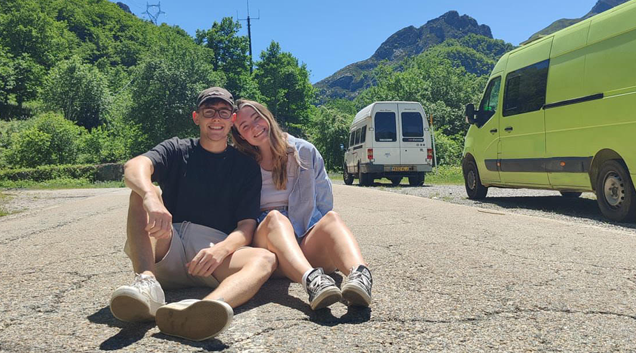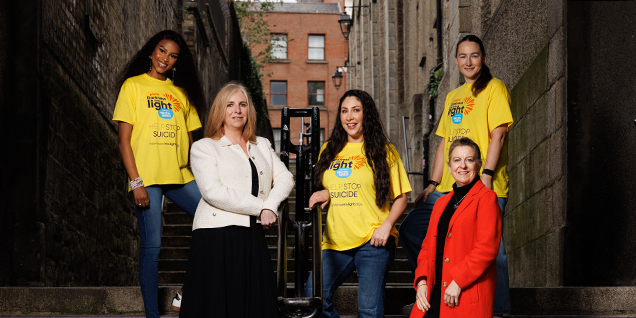How to travel sustainably this summer: Meet Kermit the Van and his millennial owners

We are Jamie and Martha. Around a year ago, we decided that we wanted to go travelling around Europe, but not in the most traditional way. We came across the idea of 'vanlife' and were immediately entranced by the concept. About a week after we both graduated from college, we bought our beloved van, which we named Kermit, and started kitting him out to suit us. After three months, we were ready to hit the road and we had the best adventure ever!
Although it doesn't seem like it, travelling in a campervan is a very sustainable way to travel. First of all, our electrical setup has two ways of charging.
Solar power
The first is our alternator. We connected our leisure batteries to the van's battery, this way when we drive, the alternator is charging both our leisure and van battery at the same time.The second and most useful way is solar power. We have a 200 watt solar panel fitted to the roof of our van, this is constantly charging our leisure batteries whenever the sun is out. We have been situated in the same spot for a few days without driving so the solar panel is a must in order to keep all of our appliances charged, our fridge cold and our lights on. Our batteries would have definitely died a couple of times without the power of solar energy.
While we were on the road, we found an app called 'Too Good To Go', this app allows restaurants, cafes and shops to sell their leftover food for a fraction of the price at the end of the day. It's such a great way to avoid having any perfectly good food go to waste. There are thousands of restaurants all over the world that use this app. We made use of this by getting the odd breakfast lunch or dinner through this app. We loved how it was helping save food waste while also being cheap and accessible to us. We probably wouldn't have used Too Good To Go at all if we were staying in a hotel or just living at home.
Upcycling
We used many different types of recycled materials when we were kitting Kermit out, we tried to look out for anything second-hand as we knew it would make the conversion cheaper for us while also making it more sustainable. For example, we were able to use some recycled wood for our walls and cabinets that we picked from an equestrian center.
We found old storage boxes in our attics so we made use of these by putting them underneath our bed, in the 'garage' area. These were great for dividing up all of our tools and outdoor equipment.
For the couch, we needed to find some sort of material to go over the cushions, luckily we knew a seamstress who had some wonderful green material left over and she was able to create covers to fit on all of our cushions. Whatever screws, tools, materials we already had, we made sure to put them to use as we wanted to use old items and save on costs as much as possible.
Water conservation
Living in a camper, you realise very fast that constant running water is something that is so easy to take for granted. From the beginning of living in the van we started learning that we needed to use as little water as possible to do things like washing dishes, brushing our teeth and washing our faces. In Kermit, we have 25 litres of fresh water and a 25-litre gray water tank. During the first few months, while we were still trying to grasp how to best use the water, we would have to fill up our tank every three days. As the months went on, we began filling our water tank less and less. After 10 months we could extend the fill up time to five days, which was very handy as we didn't have to find fill-up points as often.
A shower is a big luxury when you live in a campervan, it is not something we equipped Kermit with when we were building him because we knew how many public shower facilities there are around the place. We never had a set amount of time that we usually went without a shower, when the day came that we were feeling dirty and like a shower is what we needed, we would find a truck stop, a gym or a public pool along our route and head there.
The showers usually cost us around €3 each, and most of the hot water was cut off after 10 minutes so our shower time was limited. Overall, while living and travleling in Kermit the Van we had significantly less showers than we would have if we were living in hotels/Airbnbs.
While living in our van for 10 months we gave up a few of the luxuries that we had been used to while living in a house. These sacrifices were difficult in the beginning, but as time progressed it got easier and we definitely learned a lot about how to be more sustainable in our everyday lives.
Seeing so many different places and experiencing things that we wouldn't have had the opportunity to if it weren’t for our beloved Kermit, definitely made the sacrifices worthwhile for us.
Follow Jamie and Martha on their next sustainable adventure @kermit.thevan on Instagram and @kermit.thevann on TikTok.
Read more: 5 energy-saving tips for an all-electric home
Read more: How to save energy when heating your home
Read more: How to save energy on your home appliances
Follow Electric Ireland on social media: Twitter: @electricireland Facebook: @ Electric Ireland Instagram: @electricireland
Recent News

Electric Ireland and Pieta Launch 2025 Darkness Into Light Campaign with Ambassador RuthAnne
Read More
Electric Ireland announces the 2025 Electric Ireland GAA Higher Education Rising Stars Football Team of the Year
Read More
